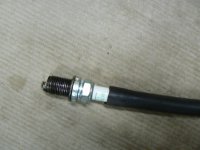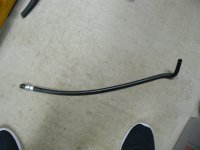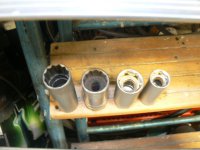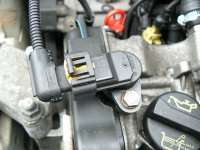Or like NGK says on their website: 25Nm.
gr J
gr J
Or like NGK says on their website: 25Nm.
gr J
Using a torque wrench is obviously the foolproof way to do it (although even then you can run into problems - for instance, did the previous installer use an anti seize grease?)On a new plug you can do it by angle
http://www.ngk-sparkplugs.jp/english/techinfo/qa/q18/index.html
It important not to drop the plugs down the hole it’s easy to bend the end. No point in gapping every main manufacture put a little protector to stop them getting bent.



Aye, but most will not have torque wrench going that small. The simple option that I use works fine and no fannying about.
My fairly common 1/2" drive Norbar goes from 10 to 150 Foot pounds. 23Nm is 18 Flbs so well within it's range.
But I have had it for donkey's years so things may well have changed. This is similar though won't be the same quality.
https://www.ebay.co.uk/itm/1-2-Driv...323107&hash=item3d2387586b:g:xQ0AAOSwfC9XPcKz
Most wont have torque wrench period, is really what I’m saying.
Now that I've looked at your pictures again, I'm wondering if these are the right plugs for your engine.
The 1.2 Panda engine changed in 2010/11 from Euro4 to Euro5; there are significant differences between the two versions and the OEM plugs are different.
The ones in your picture are correct for the Euro4 engine; the Euro5 OEM plugs have a projected tip. You can tell if you have a Euro5 engine by the VVT actuator in the cam cover.
The image below shows both plug types side by side; the ones on the left are from the Euro5 engine, fitted to cars manufactured from about late summer 2010 onwards.
However, if you're fitting iridium plugs, you have only one choice - the DCPR7EIX. These work well (from considerable real world running experience) in both engine types.
I must be missing something
the original
zkr7a-10 were more than likely fitted by fiat as the fiats part number on them 55188857
and appear to be correct via the engine code in the 2016 catalogue http://autoesfera.pt/resources/NGK2016.PDF
I could easily be wrong though
can you post a picture from all angles please. Doesn't sound right. Should look exactly like the ones you took out as far as I know.




maybe they have been incorrectly replaced previously
